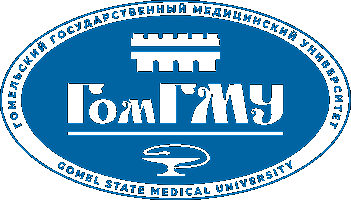Cathepsin L-induced galectin-1 may act as a proangiogenic factor in the metastasis of high-grade serous carcinoma
View/
Date
2019Author(s)
Pranjol, M.Z.I.
Zinovkin, D. A.
Maskell, A.R.T.
Stephens, L. J.
Achinovich, S. L.
Los’, D. M.
Nadyrov, E. A.
Hannemann, M.
Gutowski, N. J.
Whatmore, J. L.
Metadata
Show full item recordCitation
Cathepsin L-induced galectin-1 may act as a proangiogenic factor in the metastasis of high-grade serous carcinoma / MZI. Pranjol, D.A. Zinovkin , A.R. T. Maskell , L.J. Stephens, S. L. Achinovich , D. M. Los’, E. A. Nadyrov , M. Hannemann, N. J. Gutowski, J. L. Whatmore // Journal of Translational Medicine. – 2019. – Vol.17. – P. 216.
Abstract
Background: New treatment options for metastasised high-grade serous carcinoma (HGSC) are urgently needed. HGSC frequently metastasises to the omentum, inducing angiogenesis in the local omental microvasculature to facilitate tumour growth. We previously showed that HGSC-secreted cathepsin L (CathL) induces pro-angiogenic changes in disease relevant human omental microvascular endothelial cells (HOMECs), suggesting a role in tumour angiogenesis. Here we investigate whether CathL acts by inducing local production of the carbohydrate-binding protein galectin-1 (Gal1), which has been reported to be involved in tumourigenesis in other tumours.
Methods: HOMECs were used for all experiments. Gal1 mRNA and protein levels were measured by RT-PCR and ELISA respectively. Gal1-induced cell proliferation was assessed using WST-1 assay, migration using a transwell assay and in vivo Gal1 expression by immunohistochemistry.
Results: CathL transcriptionally regulated HOMEC production and secretion of Gal1 via activation of NF kappa B (significantly inhibited by sulfasalazine). Gal1 significantly enhanced HOMEC migration (p < 0.001) and proliferation (p < 0.001), suggesting an autocrine action. The latter was significantly reduced by the MEK/ERK1/2 inhibitors U0126 and PD98059 suggesting downstream activation of this pathway. Immunohistochemical analysis of omenta from HGSC patients with or without metastatic disease demonstrated a positive correlation between Gal1 expression and number of microvessels (r = 0.8702, p < 0.001), and area of vessels (r = 0.7283, p < 0.001), supporting a proangiogenic role for Gal1 in omental metastases.
Conclusion: HOMEC Gal1 transcription and release in response to CathL secreted from metastasising HGSC acts in an autocrine manner on the local microvasculature to induce pro-angiogenic changes, highlighting a potential new therapeutic target.
Subjects
galectin-1
angiogenesis
metastasis
high-grade serous carcinoma
signalling pathways
Collections
- 2019 [97]
